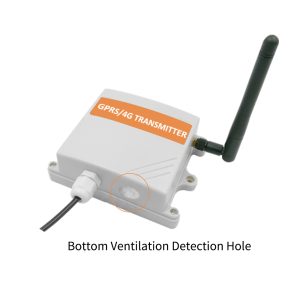Gas sensors play a crucial role in ensuring the safety of industrial and residential environments by detecting and alerting early signs of fire and gas leaks. These sensors are designed to detect specific gases, providing early warnings to prevent accidents, mitigate risks, and save lives. This article explores the importance of gas sensors for early fire and gas leak detection, their working principles, types, and the benefits they offer in ensuring a safer environment.
The Importance of Early Detection:
Early detection of fires and gas leaks is vital for preventing catastrophic events. Gas leaks, such as natural gas or propane, can lead to explosions or asphyxiation, while fires can cause extensive damage and endanger lives. Gas sensors act as an early warning system, allowing prompt actions to be taken, such as evacuations, shutting off the gas supply, or activating fire suppression systems.
Working Principles of Gas Sensors:
Gas sensors operate based on various principles, including combustion, catalytic oxidation, infrared absorption, and semiconductor technology. Combustion sensors detect flames by measuring the heat emitted during combustion processes. Catalytic sensors monitor gas concentrations by measuring changes in electrical conductivity when gases come into contact with a catalytic material. Infrared sensors detect gases based on their absorption of infrared radiation, while semiconductor sensors rely on changes in electrical resistance in the presence of specific gases.
Types of Gas Sensors:
a. Smoke Detectors: Smoke detectors are among the most commonly used gas sensors for fire detection. They contain optical chambers that sense smoke particles and trigger an alarm when the threshold is exceeded. Smoke detectors are highly effective at detecting smoldering fires and are widely used in residential and commercial buildings.
b. Carbon Monoxide (CO) Sensors: CO is a highly toxic gas produced by incomplete combustion. Carbon monoxide sensors detect the presence of CO and emit an alarm if concentrations exceed safe levels. These sensors are crucial in homes, garages, and areas with combustion appliances, such as gas heaters or stoves.
c. Flammable Gas Sensors: Flammable gas sensors, such as methane or propane detectors, are designed to detect the presence of combustible gases in the environment. They trigger an alarm when gas concentrations reach dangerous levels, providing early warning of potential explosions or fires caused by gas leaks.
d. Hydrogen Sulfide (H2S) Sensors: H2S is a toxic gas often found in industrial settings, especially in oil and gas facilities. Sensors designed to detect H2S provide early warnings to prevent worker exposure to harmful concentrations. They are vital for ensuring the safety of workers in confined spaces or areas where H2S leaks may occur.
e. Multi-Gas Detectors: Multi-gas detectors combine the functionalities of various sensors into a single device, enabling comprehensive monitoring of multiple gases simultaneously. These detectors are commonly used in industrial environments where there is a risk of exposure to different hazardous gases.
Benefits of Gas Sensors for Early Detection: a. Life Safety: Gas sensors play a crucial role in safeguarding human lives by providing early warnings of fire and gas leaks. Early detection allows for prompt evacuation and actions to mitigate risks before they escalate.
b. Property Protection: By detecting fires and gas leaks early, gas sensors help prevent extensive damage to properties. Timely intervention can help limit the spread of fires or contain gas leaks, minimizing property loss.
c. Environmental Safety: Gas leaks can have detrimental effects on the environment. Early detection and mitigation of gas leaks help prevent the release of harmful substances into the atmosphere, protecting the environment and minimizing ecological impact.
d. Regulatory Compliance: Many industries are subject to regulations regarding fire and gas safety. By implementing gas sensors for early detection, businesses can meet regulatory requirements and ensure a safe working environment for their employees.
e. Cost Savings: Early detection and prevention of fires and gas leaks can significantly reduce repair and recovery costs. The investment in gas sensors is outweighed by the potential savings resulting from damage mitigation and insurance premiums.
Integration with Building Management Systems:
Gas sensors can be integrated into building management systems, enhancing their effectiveness. When connected to a centralized control system, gas sensors can trigger alarms, activate ventilation systems, shut down equipment, or send alerts to designated personnel. This integration allows for swift response and coordinated actions, improving overall safety and efficiency.
Maintenance and Calibration:
Regular maintenance and calibration are essential to ensure the proper functioning of gas sensors. Routine inspections, sensor cleaning, and ca
 : +86 155 8830 2704
: +86 155 8830 2704 : jxdziot@gmail.com
: jxdziot@gmail.com
